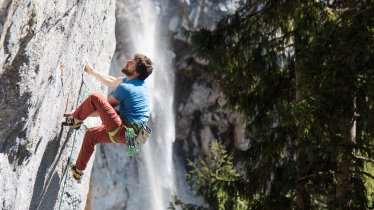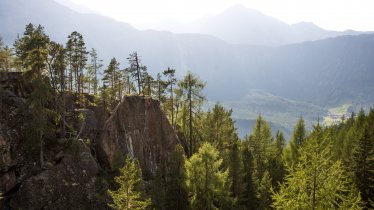The unique mountains of Tirol cast their fascinating spell over climbers from far and wide. Over 5,1000 routes in all levels of difficulty provide plenty of variety for both beginners and pros during a climbing holiday. To ensure that sport climbing is lots of fun and involves as little risk as possible, everyone should make sure they are well prepared for each tour and take due note of these recommendations.

Austrian Alpine Association Recommendations
- Make sure you are familiar with your equipment: Only use standardized mountain sports equipment (CE symbol) and read the operating instructions carefully.
- Warm up in advance: exercises and a warm up prior to climbing protects the joints, muscles and tendons.
- Partner check before every start: double-check your knots, harness buckles, belay system and rope-end.
- Pay full attention while belaying: your partner’s life lies literally in your hands.
- Let your partner know what is going on: communication prevents misunderstandings, let your belayer know before you put your weight in the rope.
- Never use rope on rope: always use metal karabiners for rappelling. Never use two ropes in one karabiner / top rope link plate.
- Protect your head: a helmet prevents head injuries in case of rock fall, or if you fall.
- Act respectfully: respect other climbers and inform them of mistakes and dangers. Adhere to any climbing restrictions that may be in place.
Tips on tours and equipment
The emergency numbers for Mountain Rescue: 140 and European emergency call: 112 are accessible from every mobile phone in any available network. The emergency App from Tirol Mountain Rescue is also very useful, because it automatically transmits your location as soon as you make a distress call. Be that as it may, it is better when this service is not required in the first place. The following important tips are helpful in ensuring accident-free climbing in the mountains:
- Make sure you are well informed about: weather forecasts and current conditions (snow, ice, slippery surfaces...), route, degree of difficulty, safety features, soil or rock conditions, exposure, access to and from parking area.
- Always choose routes and climbs that suitable for your partner’s capabilities.
- Print out the route in advance and take it with you for the climb.
- Use belay/safety systems with which you and your partner are both familiar.
- 10-15 quickdraws, depending on the area, at least 1 climbing sling per person and 3 locking karabiners.
- Climbing helmet and climbing shoes are an absolute must.
- Don’t forget: magnesium and a chalk bag, small first aid kit, loaded mobile phone, sufficient fluids and food, as well as sun and rain protection.
- A rope bag protects the rope and increases its service life.
- Flip-flops or such like are practical during breaks from climbing.
- Tapes are useful for minor scratches.
- Marking the halfway point in the rope helps prevent there being insufficient rope when abseiling.






